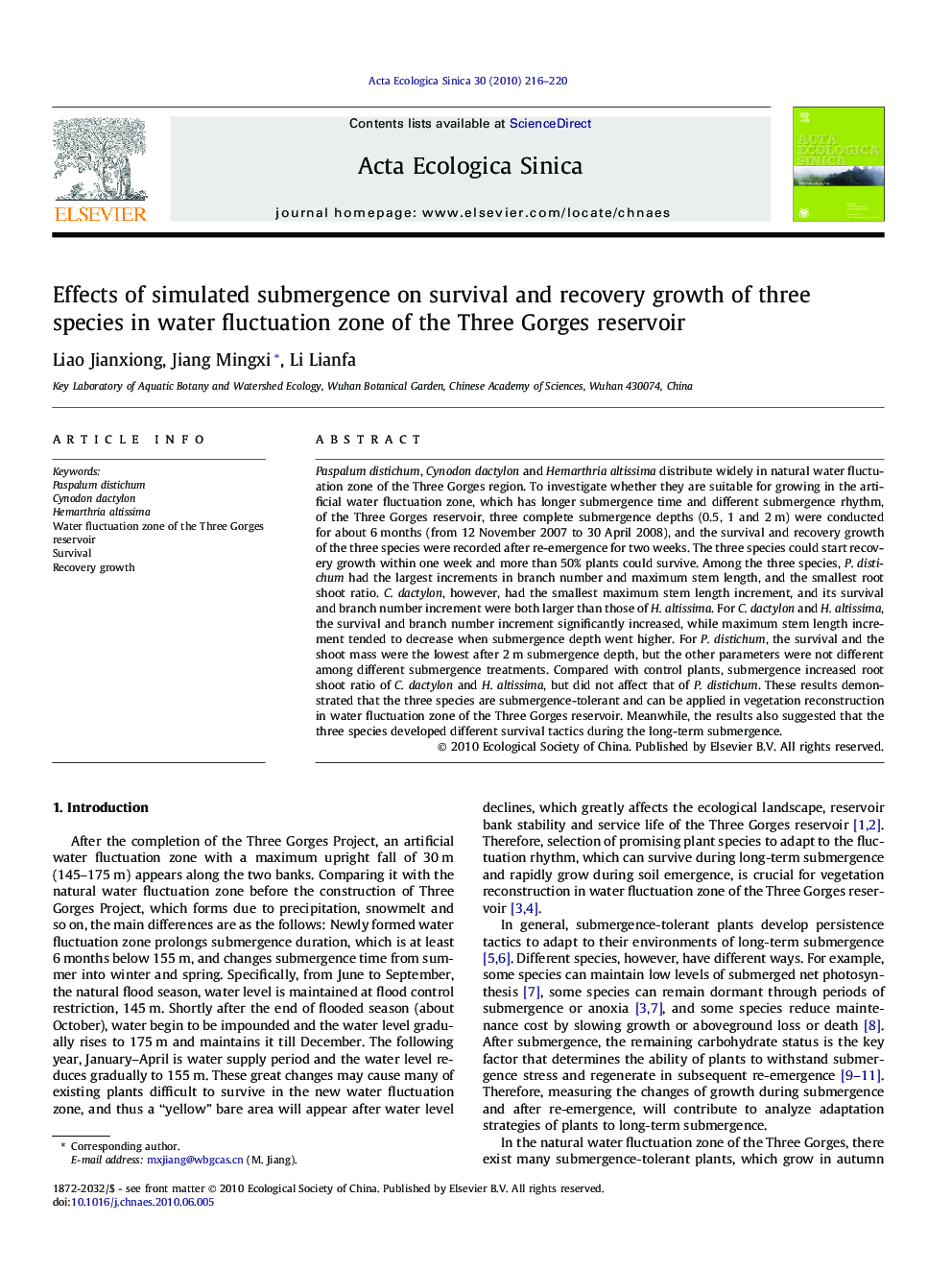| Article ID | Journal | Published Year | Pages | File Type |
|---|---|---|---|---|
| 4380132 | Acta Ecologica Sinica | 2010 | 5 Pages |
Abstract
Paspalum distichum, Cynodon dactylon and Hemarthria altissima distribute widely in natural water fluctuation zone of the Three Gorges region. To investigate whether they are suitable for growing in the artificial water fluctuation zone, which has longer submergence time and different submergence rhythm, of the Three Gorges reservoir, three complete submergence depths (0.5, 1 and 2Â m) were conducted for about 6Â months (from 12 November 2007 to 30 April 2008), and the survival and recovery growth of the three species were recorded after re-emergence for two weeks. The three species could start recovery growth within one week and more than 50% plants could survive. Among the three species, P. distichum had the largest increments in branch number and maximum stem length, and the smallest root shoot ratio. C. dactylon, however, had the smallest maximum stem length increment, and its survival and branch number increment were both larger than those of H. altissima. For C. dactylon and H. altissima, the survival and branch number increment significantly increased, while maximum stem length increment tended to decrease when submergence depth went higher. For P. distichum, the survival and the shoot mass were the lowest after 2Â m submergence depth, but the other parameters were not different among different submergence treatments. Compared with control plants, submergence increased root shoot ratio of C. dactylon and H. altissima, but did not affect that of P. distichum. These results demonstrated that the three species are submergence-tolerant and can be applied in vegetation reconstruction in water fluctuation zone of the Three Gorges reservoir. Meanwhile, the results also suggested that the three species developed different survival tactics during the long-term submergence.
Keywords
Related Topics
Life Sciences
Agricultural and Biological Sciences
Ecology, Evolution, Behavior and Systematics
Authors
Liao Jianxiong, Jiang Mingxi, Li Lianfa,
